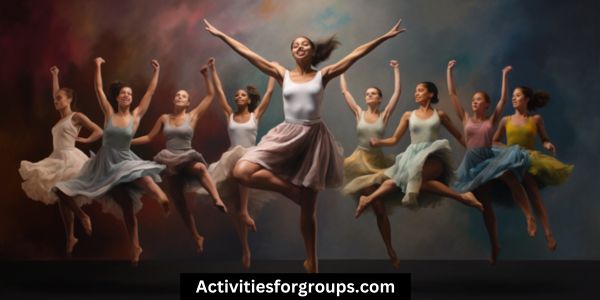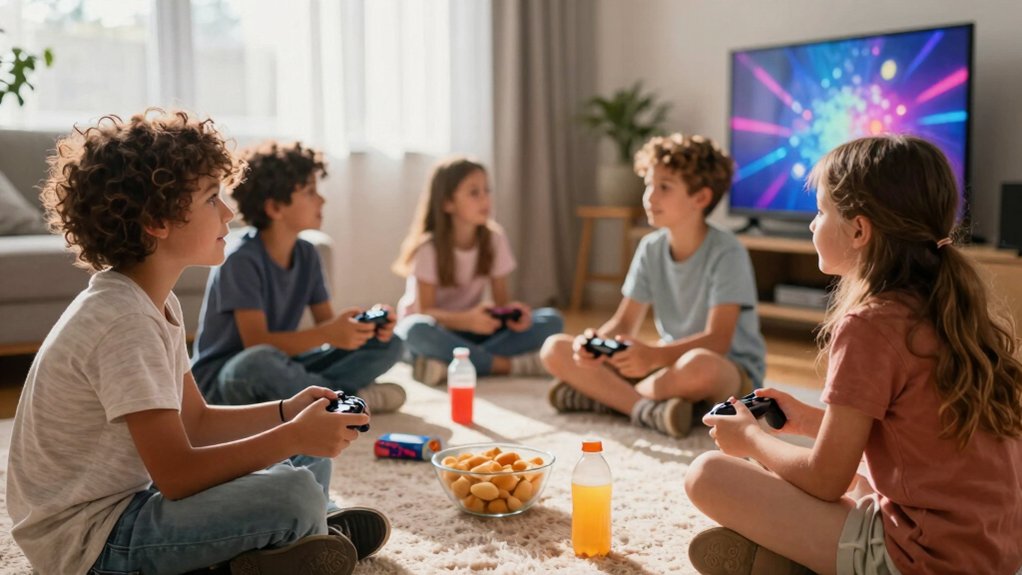Do you want to learn how to organize group dance classes? Look no further! In this article, we’ll explore how to structure the classes and plan them effectively.
We’ll also discuss the best dance styles for group classes and which music to use to enhance the experience.

Additionally, we’ll delve into the importance of managing group dynamics and how to create a positive and inclusive environment for all participants.
So get ready to get your groove on and learn all about organizing successful group dance classes!
Dance Styles
Considering the types of dance styles best suited for group classes, let’s start with the basics.
Partner dancing, such as waltz, swing, and salsa, is a great way to get people dancing together. These styles require two people and involve precise steps and movements that can be practiced. Costumes, such as ballroom gowns, can also be used to add flair to the dances.
Improvisation is another form of group dance, letting people create their own moves and express themselves through the music.
Class Structure
Every group dance class needs to have a structure in order to maximize learning and enjoyment. A well-planned class should include a variety of activities, such as:
- Creative exercises to develop individual movement and dance skills
- Choreography challenges to give participants a chance to work together
- Structured practice time to reinforce the techniques learned
It is important to remember that group classes should be fun and challenging. Give the class a chance to warm up with some creative exercises and stretching, then move into more complex moves as the class progresses.
Choreography challenges can be a great way to get everyone involved, as well as to give the class a chance to work together. A challenge might be to create a short dance piece with music of the class’s choice. This gives the participants a chance to be creative and work collaboratively.
Finally, structured practice time is important in order to reinforce the techniques learned. Each class should be focused on a particular dance style and the instructor should be able to provide clear demonstrations and instructions.
Music Selection

Once you’ve decided on the dance style for your group class, selecting the right music to accompany it’s essential for creating a successful learning environment. Music selection depends on several factors, including the chosen dance style and the type of class. When selecting music for a group class, it’s important to consider the music genres, tempo selection, and the overall vibe of the music.
When selecting a dance style, choose music that’s appropriate for the style. For example, if you’re teaching a hip-hop class, you’ll want to select music that’s fast-paced and upbeat. For a slower dance style, such as ballet or contemporary, you may want to select music that’s more relaxed.
When selecting music for a group class, it’s important to take into account the tempo selection. The tempo of the music should be appropriate for the style of dance being taught. For example, if you’re teaching a class that’s focused on technique, then you’ll want to choose music with a slower tempo. If you’re teaching a class that’s more focused on choreography, then you’ll want to choose music with a faster tempo.
In addition to the music genre and tempo selection, it’s important to consider the overall vibe that the music will create. The music should reflect the mood of the class. For instance, if the class is focused on fun and energy, then you’ll want to select music that will create an upbeat and energetic atmosphere.
When organizing a group dance class, selecting the right music to accompany it’s essential for creating a successful learning environment. By taking into account the dance style, music genres, and tempo selection, you can ensure that your class is enjoyable and conducive to learning.
Group Dynamics
Once you’ve selected the music and chosen the dance style for the class, another important step for creating an enjoyable and effective learning environment is to consider the group dynamics.
Social interaction and team building are key components of group dance classes, so instructors should plan activities to foster these elements. To do this, the following should be considered:
- Setting expectations for class behavior and participation
- Designing activities that require cooperation and communication
- Encouraging positive feedback and constructive criticism
Instructors should also strive to create an atmosphere of inclusion and respect. This can be done by setting boundaries and expectations for language and behavior, as well as creating a safe space for everyone to express themselves. Additionally, instructors should provide feedback and support to all students, regardless of their skill level.
Finally, it’s important to create an environment where students feel comfortable to make mistakes. This will allow them to take risks and be creative without worrying about judgement or failure.
With thoughtful planning and consideration of group dynamics, dance classes can be a rewarding and engaging experience for all students.
Class Planning

Planning a successful group dance class requires careful consideration of the different dance styles available. Popular dance styles for group classes include jazz, hip-hop, salsa, and contemporary. Each style has its own unique rhythm and movements, providing participants with the chance to explore different forms of expression.
To ensure a fun, productive class, it’s important to keep the energy levels high and allow for ample opportunities for socializing throughout the class. When organizing a class, the instructor needs to create a well-structured lesson plan that will allow for adequate time to teach the choreography. Depending on the size of the group, the instructor can also break the class into smaller groups to better facilitate instruction and keep the energy levels up. To ensure that everyone is involved, the instructor should create a mix of solo and group dances.
In addition to teaching the moves, the instructor should also provide a warm-up and cool-down session at the beginning and end of the class. These sessions will help participants warm up their muscles and give them a chance to socialize with one another. Finally, it’s important to create a supportive, encouraging environment so that all participants feel comfortable and confident in their ability to learn.
At the end of the day, the success of a group dance class depends on the instructor’s careful planning and attention to detail. With the right combination of dance styles, choreography, and socializing, the participants will be sure to have a fun and rewarding experience.
Frequently Asked Questions
What Types of Clothing Should I Wear for a Group Dance Class?
For a group dance class, you should wear comfortable clothing and dance shoes. Make sure to pick shoes that support your feet and allow you to move freely. Music selection also matters so pick a selection that you like and that can inspire you to move.
Is There a Minimum Age Requirement for Group Dance Classes?
Yes, it’s important to set boundaries for age when it comes to group dance classes. Depending on the level of musicality understanding required, the minimum age can vary.
How Can I Find Other People to Join My Group Dance Class?
You can find partners for your group dance class by visiting dance venues and advertising your class. Ask around to see if anyone is interested in joining and use social media to spread the word.
What Is the Best Way to Practice Dance Skills Outside of Class?
Practicing dance skills outside of class is easy! Learning at home and using online resources can help you master any routine. Try watching tutorials, researching moves, and even creating your own choreography!
Are There Any Discounts Available for Group Dance Classes?
Yes, group discounts are available for dance classes. Check with your teacher for details on how to get a discount for larger class sizes or for multiple classes. Remember to always be courteous and mindful of others in the class, as proper dance etiquette is essential.
Conclusion
Organizing a group dance class can be an enjoyable and rewarding experience. With the right selection of dance styles, class structure, music, and group dynamics, you can create a memorable and fun atmosphere for everyone to enjoy.
Don’t be intimidated by the planning process – just take it one step at a time and you’ll be ready to hit the dance floor in no time.




Leave a Reply